News & Events
News & Events
Home > News & Events > News & Events
- Title
- Special exhibit looks at Hangeul in novels
- Date
- 2016-07-08
- Hits
- 4071
- File
-
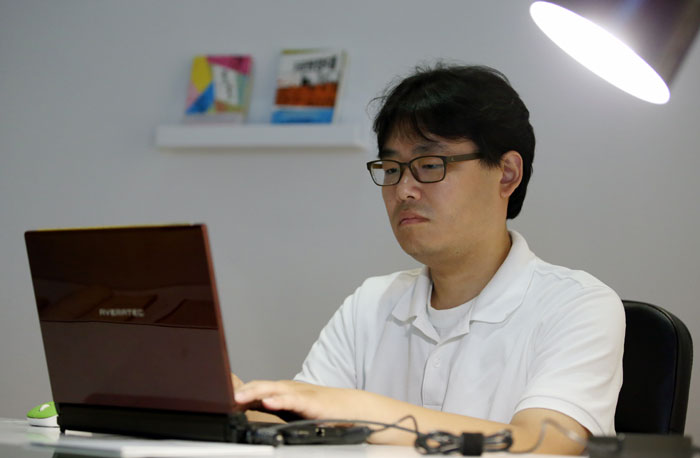
In the ‘Writer’s Room,’ Bae Sang Min types a novel on his laptop about summer. This is part of a special exhibit, ‘Hangeul in Novels,’ that will open at the National Hangeul Museum on July 21. In this room, visitors can observe the actual procedure of creating a novel and even speak with the author.
Fingers dance across the keyboard of an old notebook computer.
The story of a young couple's summer vacation is gradually being created, page by page.
The writer conducts his research online while writing or even chatting with museum-goers.
This is the “Writer’s Room” where the creative process of writing a novel is being held in real time. It is part of a new special exhibit titled ‘Hangeul in Novels’ that will run at the National Hangeul Museum from July 21 to September 6. This exhibit is about the procedure of creative writing and the meaning of Hangeul, the Korean alphabet, within that process.
During the exhibit, author Bae Sang Min will showcase the actual procedure of creative writing as he works in the museum's “Writer’s Room.”
“I wanted to let people know that writing is not a simple activity that people can do at home, and that writers have to go through an intense process of creation to make one single sentence,” said Bae.
“I am willing to communicate with visitors and even reflect their good ideas or experiences in my writing, if possible,” he added.
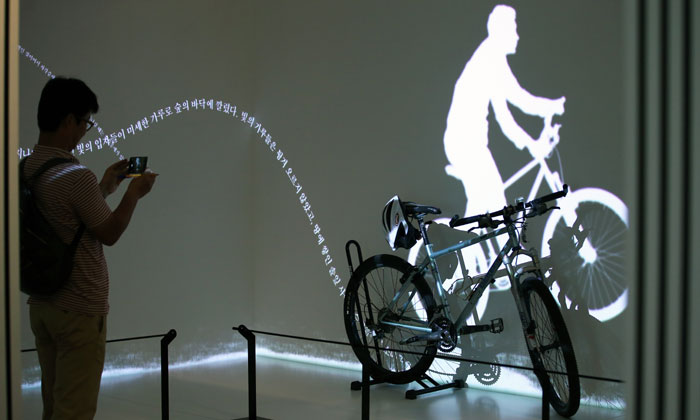
A visitors takes a photo of the bicycle that novelist Kim Hoon rode when he took a bicycle trip.
In this exhibit, visitors can learn more about the fierce process of creation, the writers, their agony in revising and rewriting, how and where they receive inspiration, and what their writing rooms look like.
Visitors can see various tools which novelists use for writing, ranging from stubby pencils, ballpoint pens and fountain pens to smartphones, and they can learn more about writers’ activities and how they get inspiration. Some of the noticeable items on display include many books and notes which Kim Hoon used to write his book “Song of the Sword,” and his bicycle, which he actually rode on a bike trip. Other interesting items are novelist Jo Jung-rae’s ballpoint pens and more than 580 refills and notes he used to write “Arirang.” There are also papers he used to take memos when sending his story to be published in a newspaper.
The exhibit introduces people's views on the meaning of Hangeul and the definition of well-written pieces of writing by four novelists, including Kim Hoon, Yun Hu-myong and So Young-en. Through video clips, people can see the actual process of revising.
Another impressive spot at the exhibit is the “Forest of Sentences,” 문장의 숲. People can see classical Hangeul novels, such as “Shim Cheong,” “Chunhyang” and “Im Kkeokjeong,” which were written hundreds of years ago but which are still loved by many people today. There are also various forms of cultural content, such as films that are made based on the novels. Visitors can learn more about various modern and contemporary Korean novels and find a special place that introduces Hangeul novels about love.
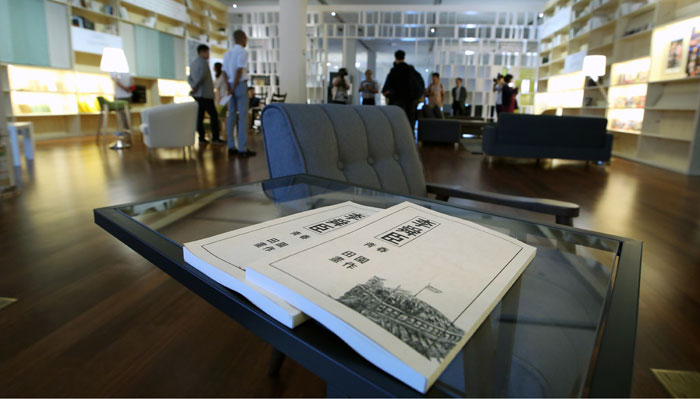
In the 'Forest of Sentences,' visitors can learn about classical, modern and contemporary Korean novels and watch clips from films that were based on the them.
The procedure of translating a novel is also on display in another part of the exhibit where people can learn more about translation, often referred to as “the second creation.” People can see how the final outcome is made through short videos and other formats. In one part, the exhibit shows various versions of the Korean versions of “The Old Man and the Sea” by Ernest Hemingway, which show the slight differences in the Korean expressions from sentence to sentence.
More information about the museum is available at its homepage in English, Chinese and Japanese: www.hangeul.go.kr.
Article by Yoon Sojung
Photos: Jeon Han, National Hangeul Museum
Korea.net Staff Writers
arete@korea.kr
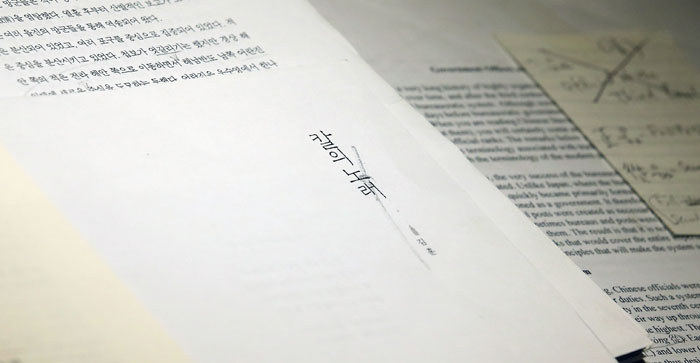
The manuscript used by a translator to translate ‘Song of the Sword’ into English, originally by Kim Hoon, can be seen at the museum.
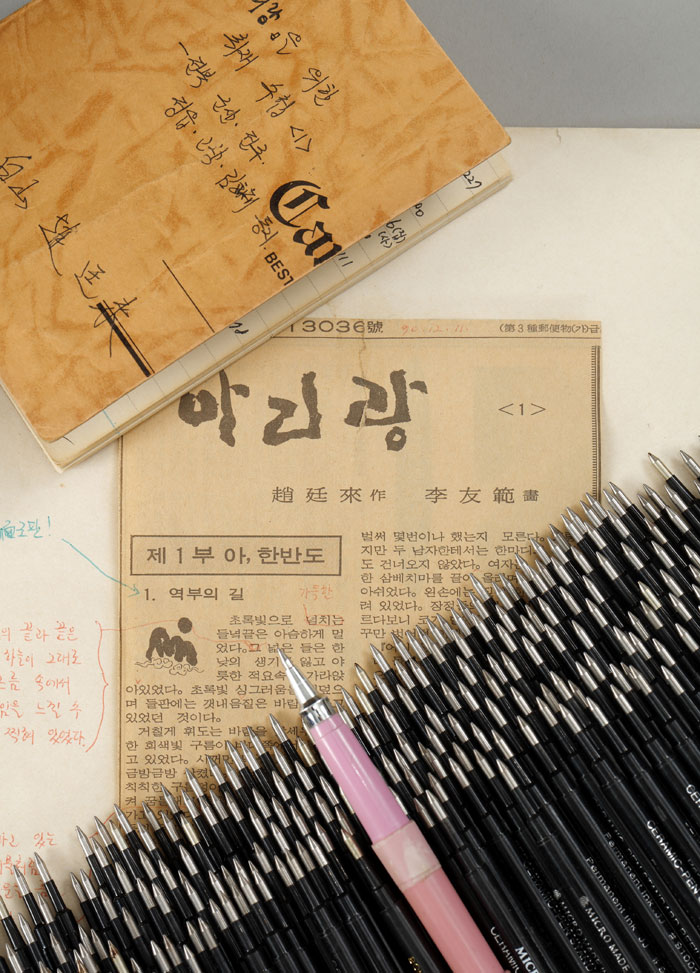
More than 580 ink refill cartridges, a ballpoint pen used by Jo Jung-rae to write ‘Arirang’ and notepads he used while proof reading his novel before it was published in a newspaper are all on display at the museum.
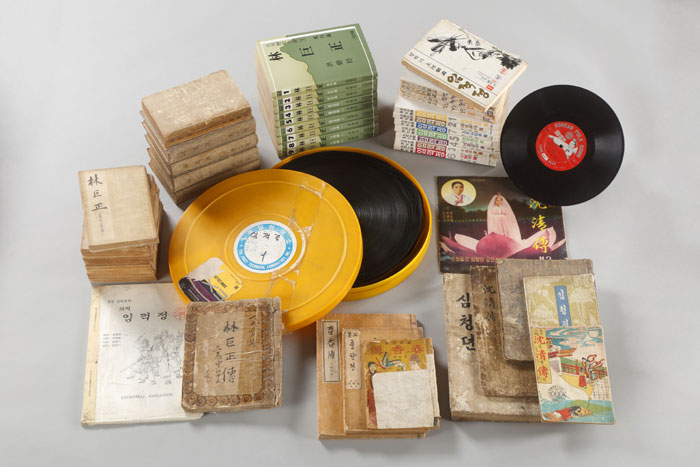
Copies of classical Korean novels, such as ‘Shim Cheong,’ ‘Chunhyang’ and ‘Im Kkeokjeong’, are on display at the museum, as are audio records and films that are based on those novels.
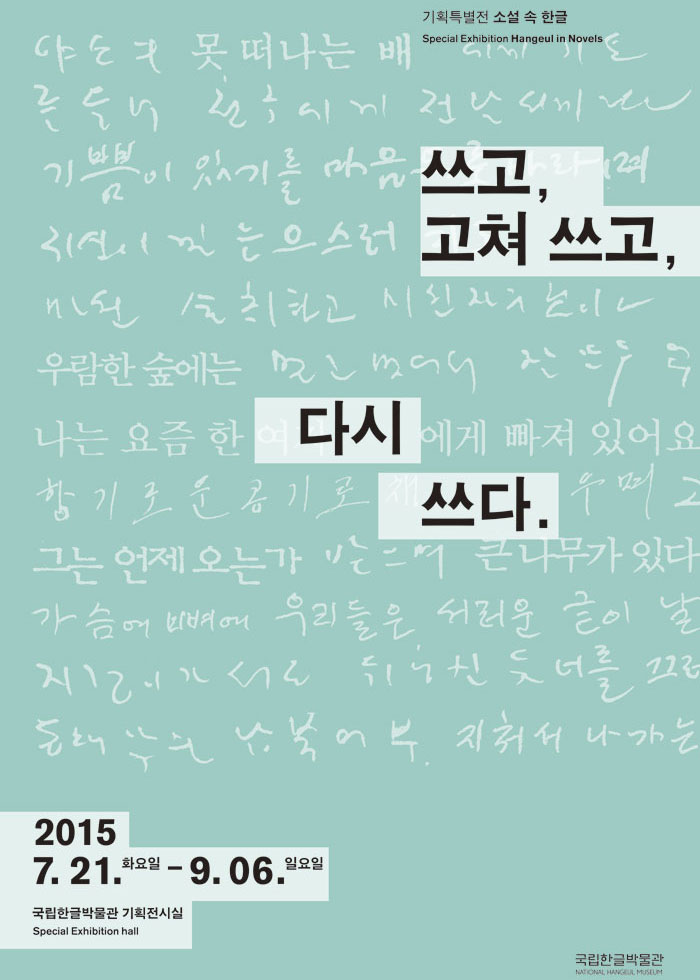
A poster for the special exhibit ‘Hangeul in Novels’ at the National Hangeul Museum.



















